pierson_hill
New member
- Joined
- May 7, 2007
- Messages
- 24
- Reaction score
- 7
- Points
- 3
- Age
- 41
- Location
- Tallahassee, FL
- Country
- United States
- Display Name
- Pierson Hill
I do a lot of digging around for salamanders in the eastern panhandle of FL and I've had luck finding most of the species with relative consistency. However, one species has been a monkey on my back for almost 5 years now. It started in 2005 when I was an undergad in the NC Piedmont surveying a variety of stream sheds for their salamander communities. Pseudotrition ruber were relatively common at most sites with minimal disturbance and I grew pretty familiar with their larvae. I then began catching Pseudotriton larvae in some of the lower areas approaching floodplain river swamp streams that didn't quite look right. I was almost able to convince myself they were montanus but was never able to substantiate it by finding an adult at those locations, despite many concerted searches (I even turned up a county record Gyrinophilus in the process!). It wasn't until several months after I graduated that others involved in the study began catching adults in funnel traps at the sites where I was finding the suspect larvae....
Skip forward to Fall 2009, past many seasons in north Florida of flipping logs in muddy seeps, digging through mud packs, chasing old records, and dipnetting sloughs with only 2 small larval P. m. floridanus to show for my efforts. This subspecies is very secretive and rarely encountered, especially as adults. As 2009 deepened into fall, I knew my probabilities of seeing this species would spike during their Oct-Nov breeding season. A group of us made a concerted effort in some good looking territory one weekend, but we only came up with a single larvae while netting some leaf packs.

Larval P. m. floridanus
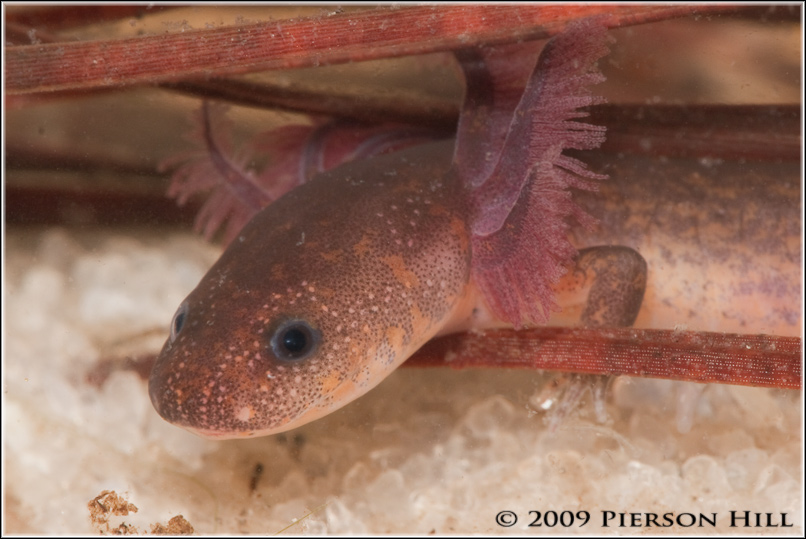
There was enough interesting bycatch that not all was lost.
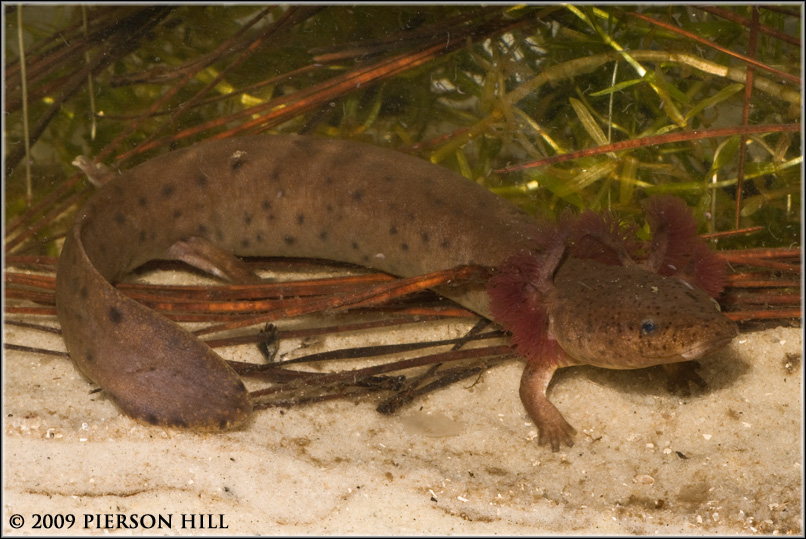
Necturus "lodingi"
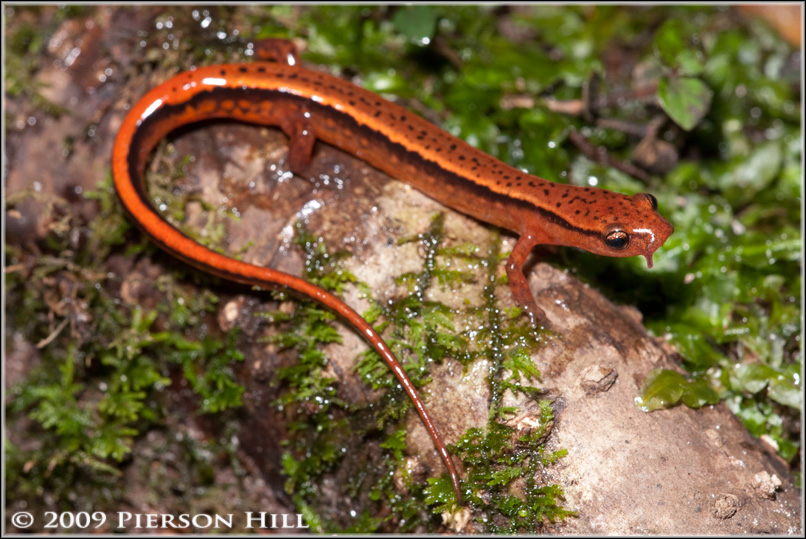
Eurycea cirrigera
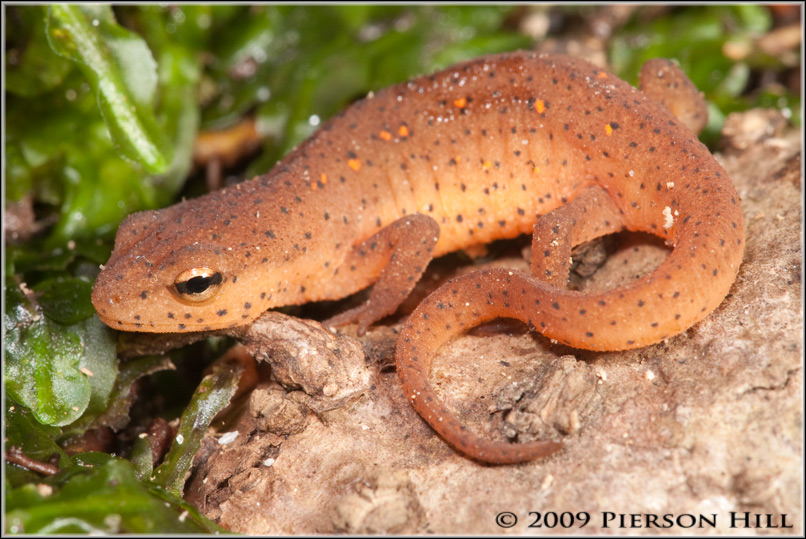
Notophthalmus viridescens louisianensis eft.
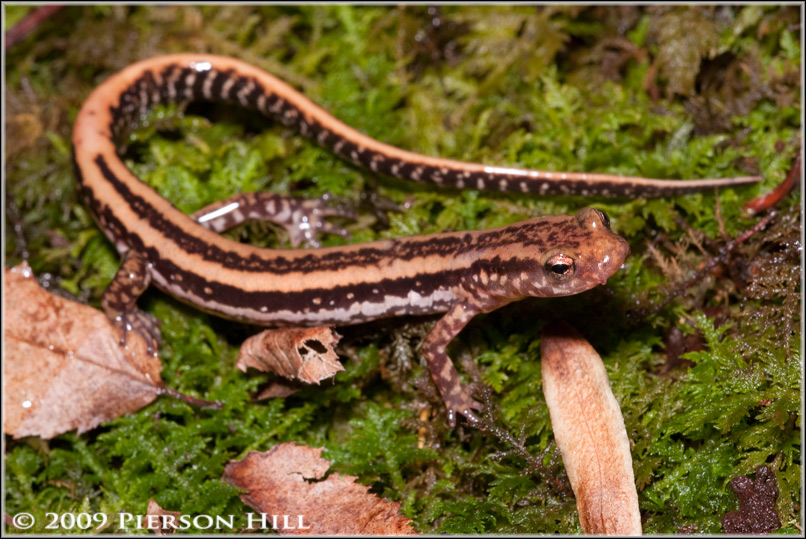
Eurycea guttolineata
The next weekend while I was in SC, two buddies returned to one of our previous sites and found this:
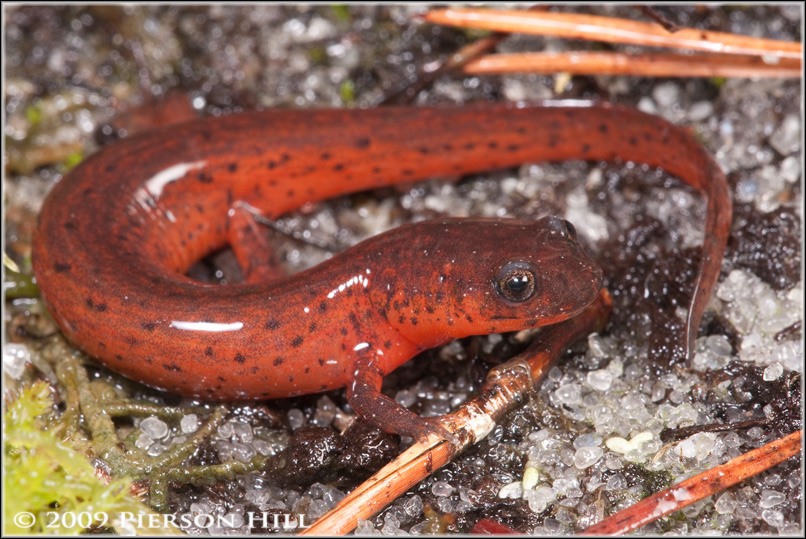
An awesome little metamorph floridanus.
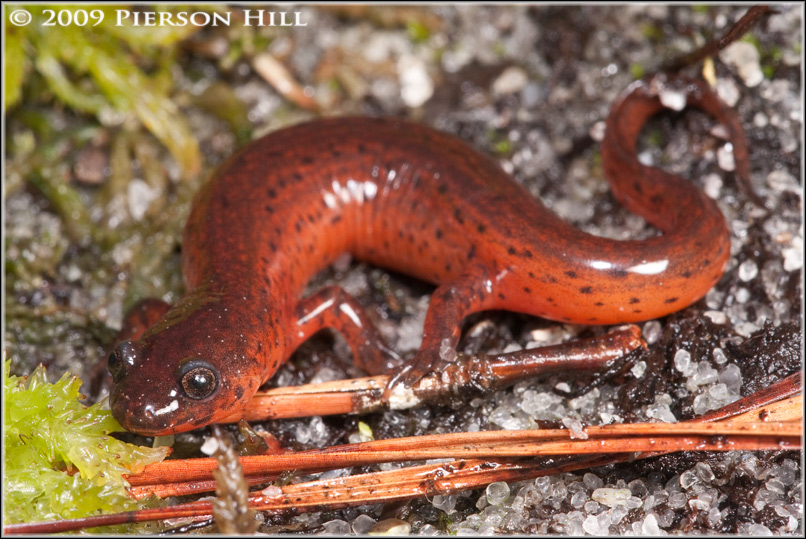
Meanwhile, all I was catching in SC were Eurycea quadridigitata (Dwarf Salamanders) and a random assortment of the usuals for that area...

Stereochilus marginatus

Interestingly, I flipped an aseasonal gravid A. mabeei amongst a slew of A. opacum.

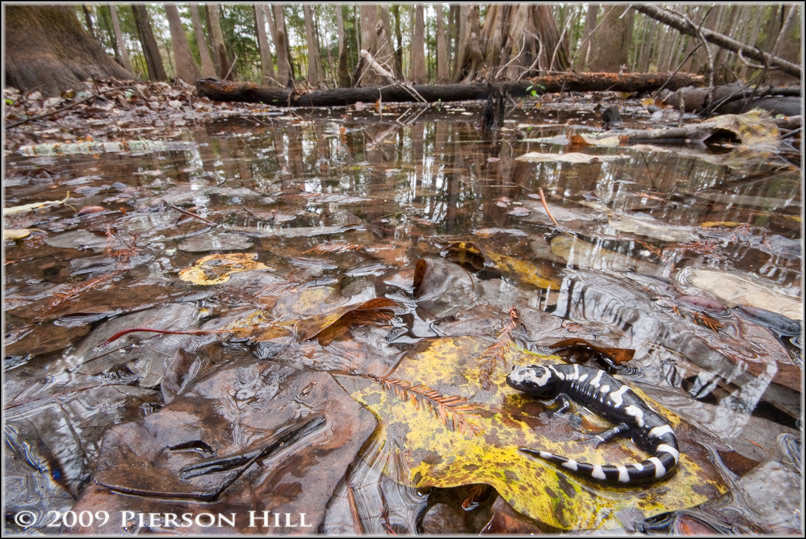
Lots of these!
Fortunately,a friend hooked me up BIG TIME with some tips on how to see the nominate P. montanus in the SC piedmont, and I had some luck on my way back to Florida.
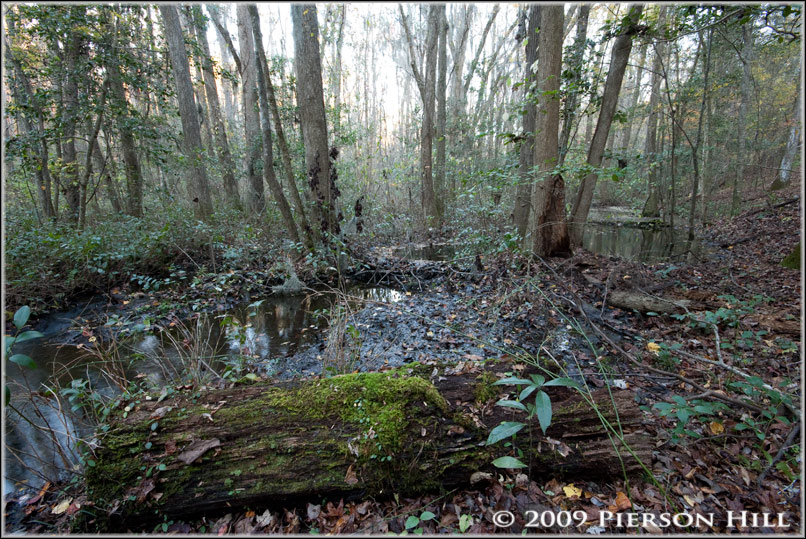
Under the log in the foreground, I found 2 E guttolineta, 3 Desmognathus, a Rana clamitans, and this...

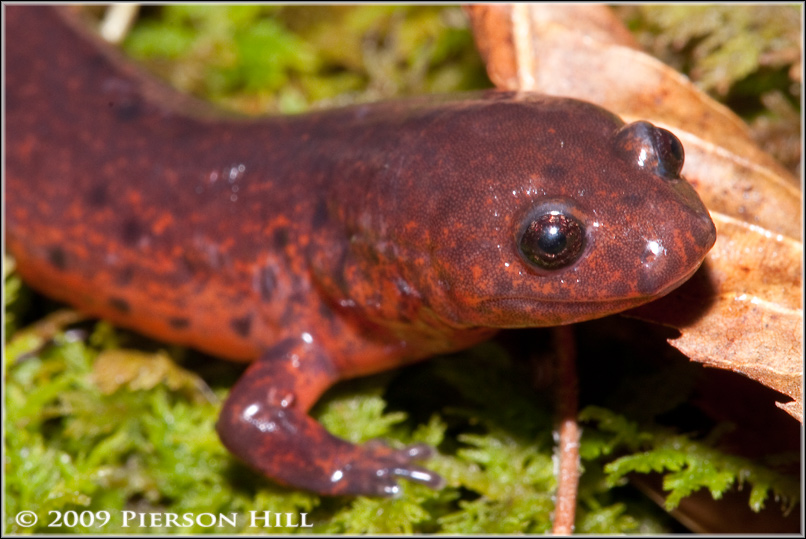
So the monkey on my back had been throttled!...well, sort of. Although finding a SC Eastern Mud Salamander was awesome, I still needed to see the Rusty Mud Salamander which apparently could be found within a few minutes drive of my house. So back in FL the next weekend, I went straight back to the spot where my buddies had found the metamorph floridanus to see if I could replicate their success.
The habitat consists of a riparian floodplain swamp created by a steephead stream flowing out of a sandhill upland. Where the steephead stream hit the floodplain of the river, it fanned out into a series of sloughs and pools with thick soupy mud and deep leaf packs.
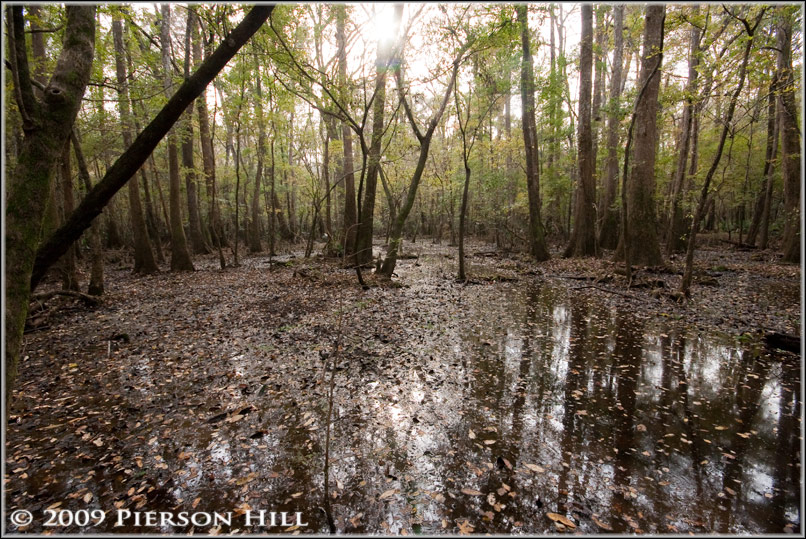
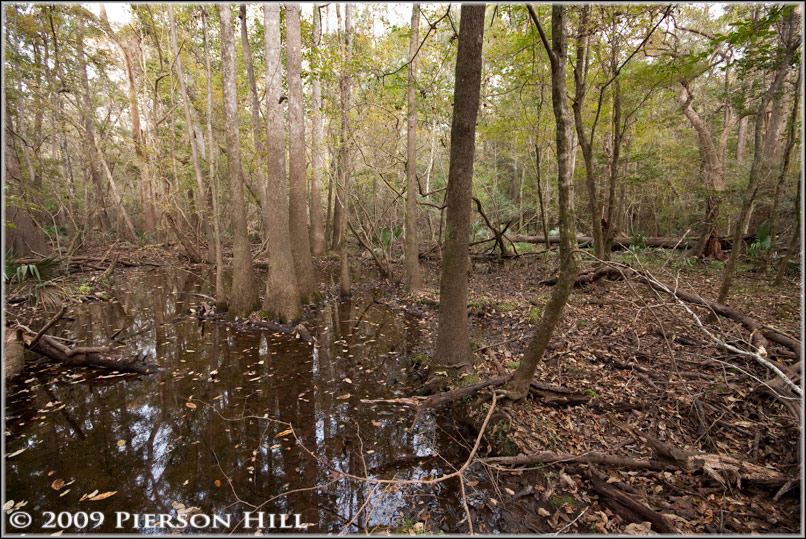
After a few minutes of targeted searching...Booyah! I uncovered a large gravid female sheltering in the entrance of a crayfish burrow.

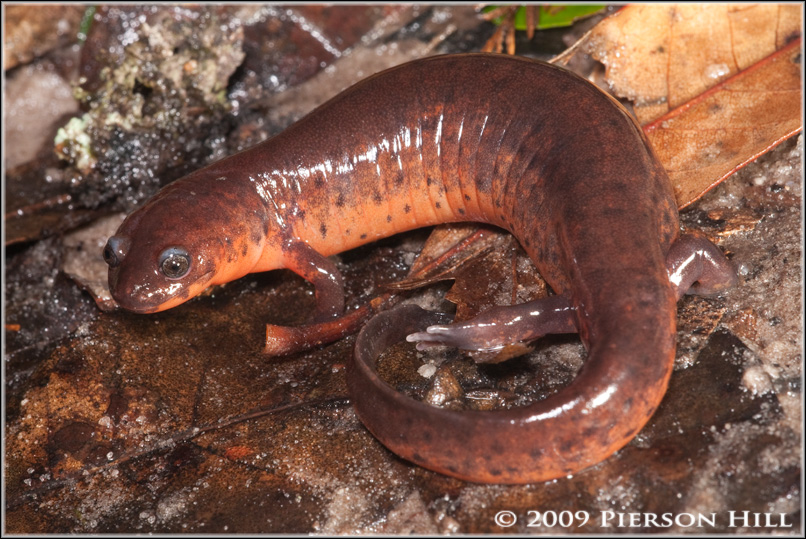
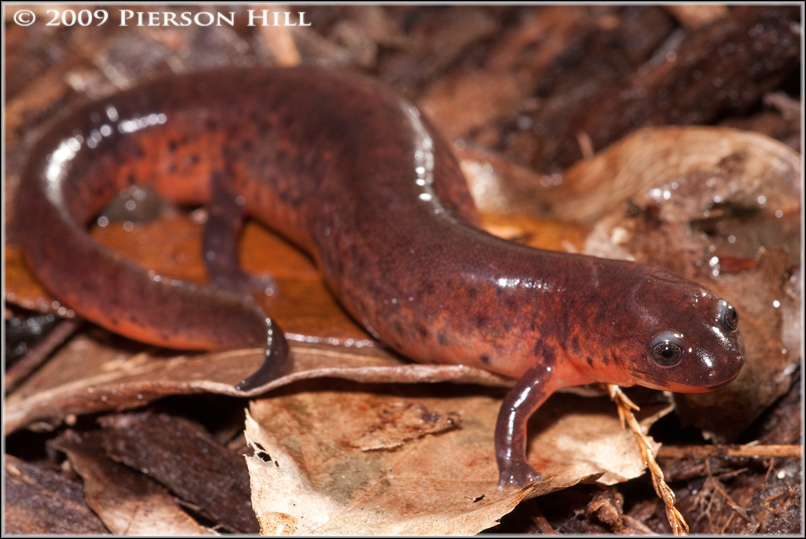
Since then, I've made several return trips to that locale and have had luck finding Rusty Mud Salamanders every time, with the last encounter on 3-17-10. Here are an assortment of the individuals I've seen.
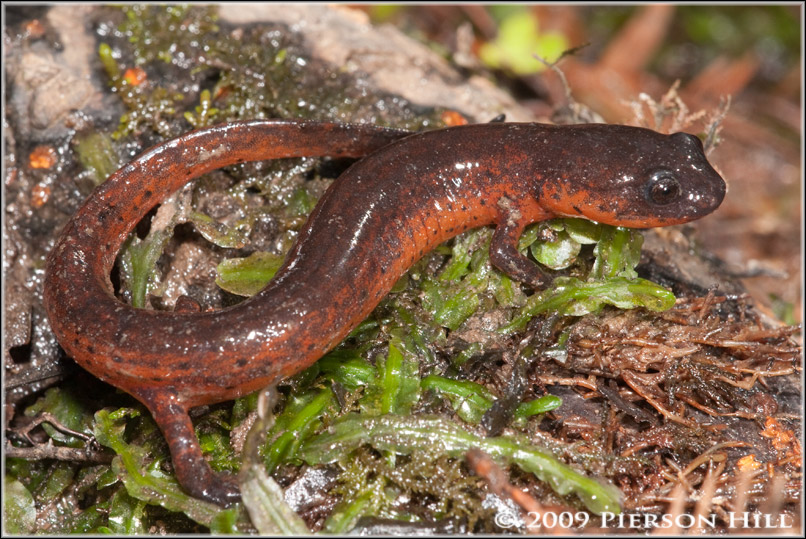
Subadult/recent metamorph.
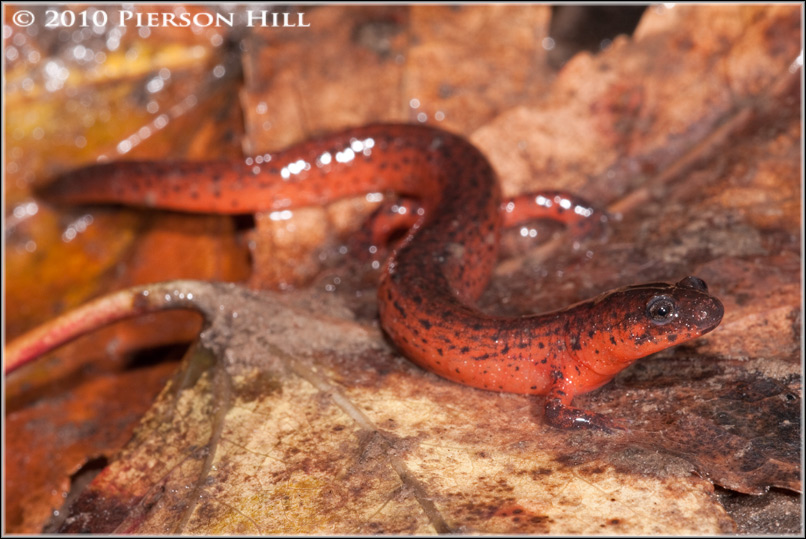
Adult male.
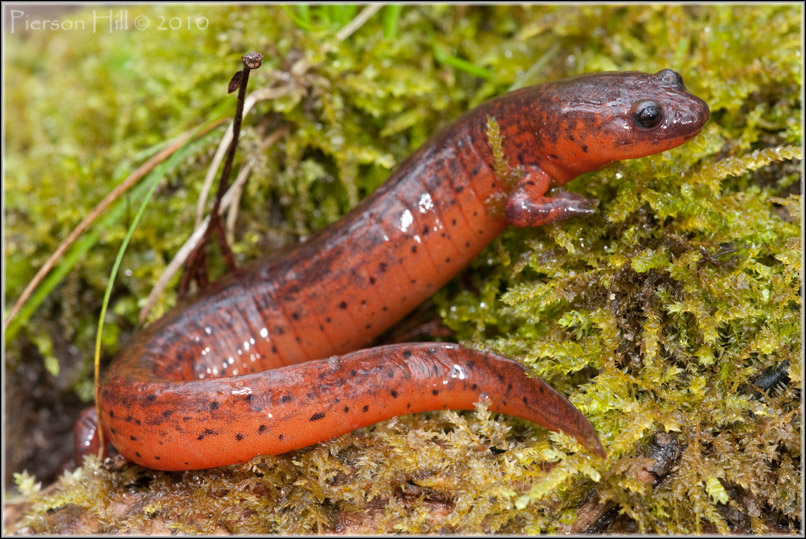
Big adult female.


So, after years of fruitless searching, my efforts were finally rewarded and then some. Thanks for looking!
Skip forward to Fall 2009, past many seasons in north Florida of flipping logs in muddy seeps, digging through mud packs, chasing old records, and dipnetting sloughs with only 2 small larval P. m. floridanus to show for my efforts. This subspecies is very secretive and rarely encountered, especially as adults. As 2009 deepened into fall, I knew my probabilities of seeing this species would spike during their Oct-Nov breeding season. A group of us made a concerted effort in some good looking territory one weekend, but we only came up with a single larvae while netting some leaf packs.

Larval P. m. floridanus

There was enough interesting bycatch that not all was lost.

Necturus "lodingi"

Eurycea cirrigera

Notophthalmus viridescens louisianensis eft.

Eurycea guttolineata
The next weekend while I was in SC, two buddies returned to one of our previous sites and found this:

An awesome little metamorph floridanus.

Meanwhile, all I was catching in SC were Eurycea quadridigitata (Dwarf Salamanders) and a random assortment of the usuals for that area...

Stereochilus marginatus

Interestingly, I flipped an aseasonal gravid A. mabeei amongst a slew of A. opacum.


Lots of these!
Fortunately,a friend hooked me up BIG TIME with some tips on how to see the nominate P. montanus in the SC piedmont, and I had some luck on my way back to Florida.

Under the log in the foreground, I found 2 E guttolineta, 3 Desmognathus, a Rana clamitans, and this...


So the monkey on my back had been throttled!...well, sort of. Although finding a SC Eastern Mud Salamander was awesome, I still needed to see the Rusty Mud Salamander which apparently could be found within a few minutes drive of my house. So back in FL the next weekend, I went straight back to the spot where my buddies had found the metamorph floridanus to see if I could replicate their success.
The habitat consists of a riparian floodplain swamp created by a steephead stream flowing out of a sandhill upland. Where the steephead stream hit the floodplain of the river, it fanned out into a series of sloughs and pools with thick soupy mud and deep leaf packs.


After a few minutes of targeted searching...Booyah! I uncovered a large gravid female sheltering in the entrance of a crayfish burrow.



Since then, I've made several return trips to that locale and have had luck finding Rusty Mud Salamanders every time, with the last encounter on 3-17-10. Here are an assortment of the individuals I've seen.

Subadult/recent metamorph.

Adult male.

Big adult female.


So, after years of fruitless searching, my efforts were finally rewarded and then some. Thanks for looking!
